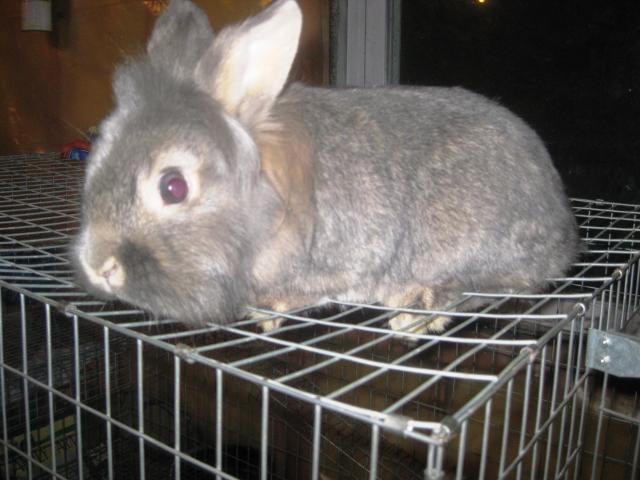Quote:
Well I stand corrected,thanks.You know saying the buck is a harlequin makes perfect sense.I saw the darker markings on the buck but my first thoght was smut.I have 2 harlequin Lionheads but they have so much more of the black striping as I think of it that I didn't even think about the harli gene.
As far as the grey eyes and Vienna gene that was info given to me that I didn't realize was wrong,thanks on that too.
Bunnylady I have a bkn chestnut agouti doe with grey eyes.If I understand your post correctly I would think she would produce a lilac or choc when bred to a lilac buck.She has produced blue.
A lot of people seem to get confused by the Vienna gene. It doesn't always change eye color, but when it does, it changes it to bright blue (you can find Vienna heterozygotes that have one blue eye and one brown one!). In spite of what some people might tell you, there is no such thing as an "almost" blue-eyed white. Vienna doesn't produce in-between shadings of color. If a rabbit has any other eye color (including blue-grey), the color is the result of some other gene(s) than Vienna. Some people think that any bits of white on the face or feet are the result of the Vienna gene, too. The most likely cause of white "noses and toeses" is one of the Dutch genes (there are several Dutch genes; some produce more of the Dutch pattern than others. Even purebred Dutch rabbits don't always have the classic full blaze and white shoulders). Vienna can produce a pattern remarkably similar to the Dutch pattern (it has been sometimes referred to as "psuedo Dutch") so the confusion is understandable. IMO, unless you know without a doubt that there is BEW behind the Dutch-like markings on a rabbit, odds are, its just Dutch.
Are you sure your doe is a Chestnut? Chestnut is the result of the full color (D) gene; a Chestnut shouldn't have grey eyes. The dilute gene (d) is usually responsible for grey eyes, but there is no connection between chocolate and dilute. You can easily get one without the other. If your doe is a dilute, then she will produce only dilutes when bred to another dilute (the Lilac). Since Chocolate is recessive, she would have to be carrying at least one Chocolate gene to have Chocolate babies (or, if both parents are dilutes, Lilac babies). Both the Chocolate gene and the dilution gene will affect eye color to some degree. Chocolate rabbits' eyes are not as dark a shade of brown as the eyes of, say, a black. Add the lightening effect of the dilution gene, and the eye gets even lighter, becoming a sort of lavender tint. Chinchilla plus Chocolate can have the same effect.


















